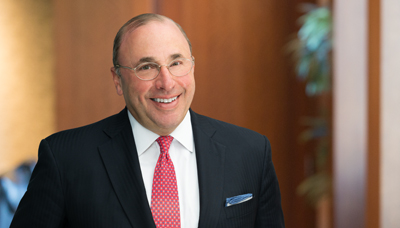The Seventh Circuit issued an opinion finding that a physician-shareholder and board member of a small medical professional corporation was an employer, rather than an employee of the corporation, for purposes of the Americans with Disabilities Act (ADA), Title VII of the Civil Rights Act of 1964 (Title VII) and the Rehabilitation Act of 1973 (Rehabilitation Act).
The case, Bluestein v. Cent. Wis. Anesthesiology, No. 13-3724 (Oct. 15, 2014), is significant for the fact that when a physician-shareholder departs a group, the question often arises of whether employment laws govern the separation. In most cases, it has been assumed they do. The Seventh Circuit, which has appellate jurisdiction over the federal district courts in Illinois, Indiana and Wisconsin, has affirmatively established, however, that at least the ADA, Title VII and the Rehabilitation Act do not apply when the departing physician-shareholder is an owner in a setting like the small medical P.C. at issue in the case.
In Bluestein, the defendant-appellee was a service corporation organized to engage in the practice of providing anesthesia services. The plaintiff-appellant was an anesthesiologist who initially began working for the appellee on a part-time basis. Her employment agreement identified her as an employee and she worked in that capacity for two and a half years. She later, however, became a full partner of the corporation, as well as a shareholder and member of the board of directors, which was comprised of all of the physician-shareholders. As a shareholder, the appellant had a vote on all matters coming before the board. Physician-shareholders – there were approximately sixteen when the appellant served in that capacity – shared profits and losses equally and most issues affecting the shareholders were resolved by a majority vote.
Following an accident that resulted in serious injuries, the appellant requested an open-ended leave while undergoing medical treatment. The board voted to deny the request, then voted to allow the appellant to resign up to a certain date, at which point she would be terminated absent a letter of resignation. When the appellant did not resign, she was terminated. She sued the corporation for violations of the ADA, Title VII, and the Rehabilitation Act. The district court concluded that the appellant was an employer at the corporation rather than an employee, and thus was not entitled to the protection of those statutes. The Seventh Circuit agreed.
In reaching its decision, the court noted that the definition of “employee” (“an individual employed by an employer”) in each statute is vague and circular and the Supreme Court has reasoned that, when a statute does not provide a working definition, the courts should turn to the common law test for determining who qualifies as an employee. This required looking at the common law definition of “servant,” which is a person whose work is controlled or is subject to a right to control by the master. Based on this definition, the Supreme Court adopted a list of six factors designed to reflect the common law element of control:
- Whether the organization can hire or fire the individual or set the rules and regulations of the individual’s work;
- Whether and, if so, to what extent the organization supervises the individual’s work;
- Whether the individual reports to someone higher in the organization;
- Whether and, if so, to what extent the individual is able to influence the organization;
- Whether the parties intended that the individual be an employee, as expressed in written agreements or contracts; and
- Whether the individual shares in the profits, losses, and liabilities of the organization
The Seventh Circuit used these factors to conclude that the appellant was an employer under the statutes at issue as a matter of law:
- Hiring and firing decisions were made collectively by the corporation’s shareholder-board members. Further, the physician-shareholders collectively voted at board meetings on the rules and regulations that governed all of the staff.
- The appellant produced no evidence that anyone at the corporation supervised or had a right to control the details of her work as an anesthesiologist.
- The evidence demonstrated that each physician-shareholder had an equal vote in matters affecting the organization. That the appellant often voted in the minority was irrelevant.
- The corporation was run by a sixteen-member board that consisted of all the physician-shareholders and not some exclusive subset of them. All major decisions were put to a vote and each shareholder had an equal vote. Both profits and losses were shared equally. Accordingly, the Court determined that the appellant enjoyed the same right of control that every other physician-shareholder possessed.
- The court assumed that the employment agreement the appellant signed before she became a full shareholder, which repeatedly referred to her as “employee,” remained in effect through the time of her termination. Nevertheless, the Court determined that the other factors regarding the control the appellant shared equally with the other physician-shareholders in the corporation overcame the simple labelling of the appellant as an employee in the employment agreement.
- No evidence supported the appellant’s bald assertion that she did not share in the profits, losses, and liabilities of the corporation.
While a factor-by-factor analysis is inherently fact-specific, the Seventh Circuit’s decision represents a significant look into how courts may treat other physician-shareholders for purposes of federal employment laws.
For more information, please contact the Barnes & Thornburg attorney with whom you work or a member of the firm’s Healthcare Department: Mark Rust at 312-214-8309 or mark.rust@btlaw.com; Heather Delgado at 312-338-5905 or heather.delgado@btlaw.com; Mike Grubbs at 317-231-7224 or michael.grubbs@btlaw.com; or Laura Seng at 574-237-1129 or laura.seng@btlaw.com.
© 2014 Barnes & Thornburg LLP. All Rights Reserved. This page, and all information on it, is proprietary and the property of Barnes & Thornburg LLP. It may not be reproduced, in any form, without the express written consent of Barnes & Thornburg LLP.
This Barnes & Thornburg LLP publication should not be construed as legal advice or legal opinion on any specific facts or circumstances. The contents are intended for general informational purposes only, and you are urged to consult your own lawyer on any specific legal questions you may have concerning your situation.

















